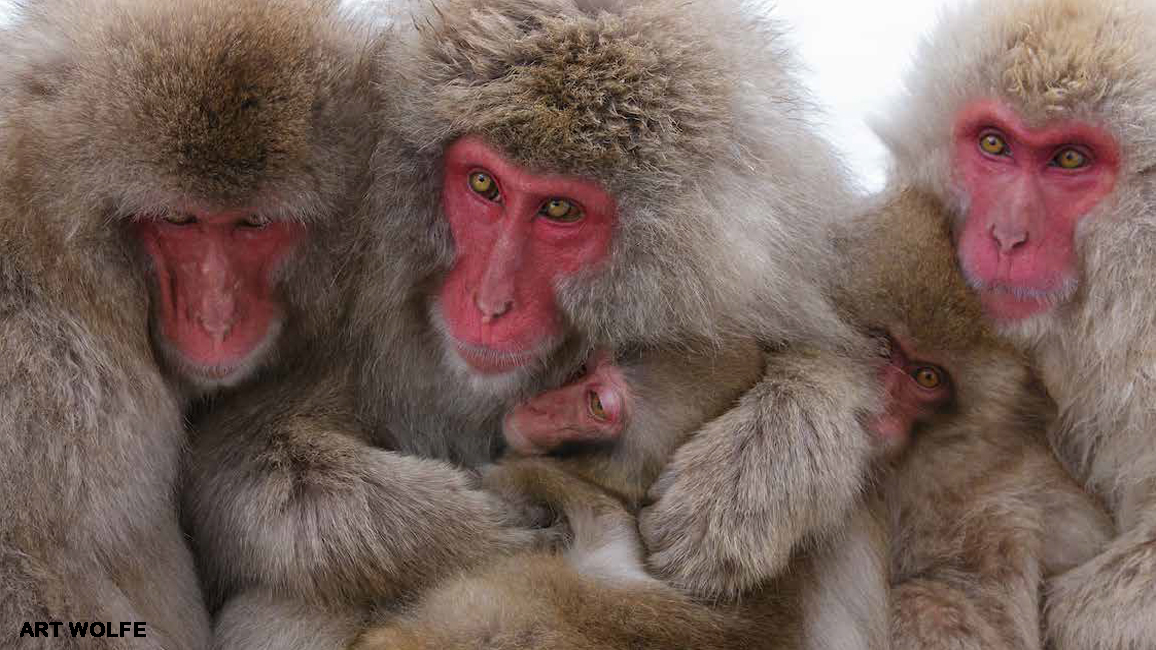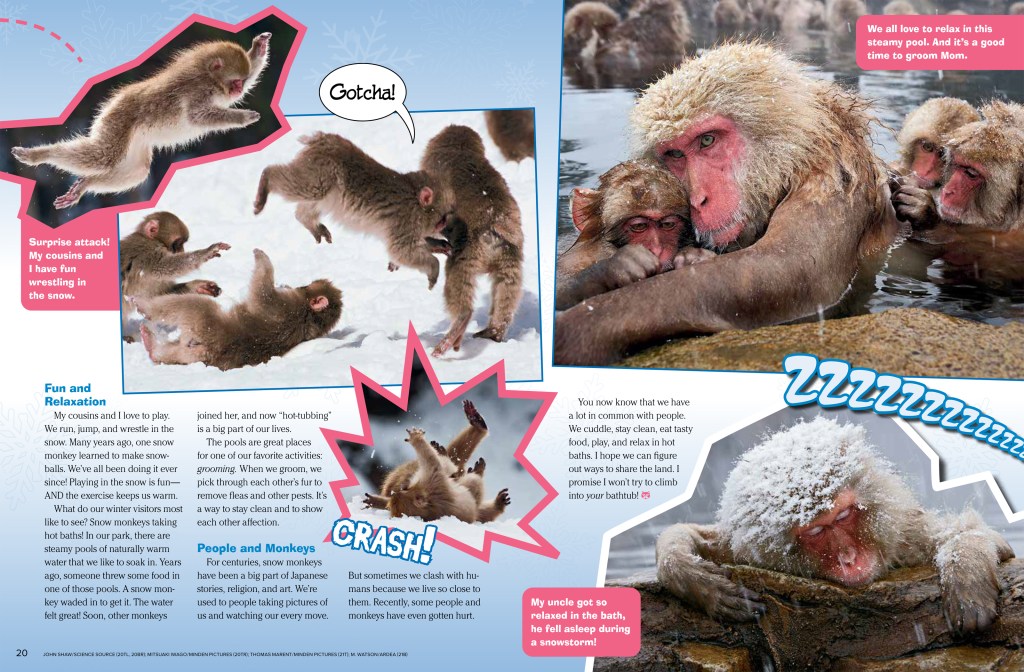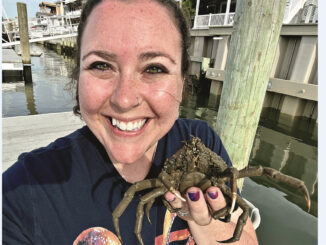
Winter Snow Monkeys
By Mari Macaque as told to Anne CisselIt’s cold in Japan’s mountains. But we snow monkeys know how to stay warm—and have fun!

Welcome to Japan’s Jigokudani Monkey Park! My name is Mari, and I am a Japanese macaque (muh-KAK). Many people call me a “snow monkey” because I live farther north than any other kind of monkey. The winter snow here doesn’t bother me! My family and I stay toasty warm by huddling together. Our thick fur helps a lot, too.
My mom and dad are the leaders of our monkey group, or troop. Our troop has about 40 monkeys in it, but others may have as many as 100. Thousands of people come to the park to see us every year. They like to watch an interesting way we stay warm. But more on that later. First, let me show you around!

LIFE IN THE TROOP
Japanese macaques live in many places in Japan, not just in this park in the mountains. Some live near the beach or in forests where it is warmer. We all like to eat lots of different kinds of food. Leaves, fruits, nuts, and insects are yummy treats when we can find them. Where I live, snow is on the ground for four months of the year. It’s hard to find food then, so we eat bark, roots, and sometimes even dirt!
Early on, I rode around on my mother’s belly. That was a good way to stay safe from predators such as eagles. When I was about a month old, I started getting on her back. I’m almost a year old now, and I still love a piggy-back ride!
SNOW MONKEY SMARTS
Not to brag, but Japanese macaques are very clever. We are primates (PRY-mayts), the same animal group that chimpanzees, gorillas, and YOU belong to. As with most primates, we’re curious and we learn quickly.
I’ll share a couple of stories I’ve heard about some of my brainy relatives. Once, some scientists gave a group of snow monkeys some sweet potatoes. Those monkeys lived near the beach. They learned to wash the sand off the potatoes with water before eating them. Then the monkeys starting dipping the potatoes in seawater, even if they weren’t sandy. Scientists think they learned that salt made their food taste better.
Our smarts can help us in other ways, too. One snow monkey figured out how to keep her teeth clean: She used her own hair as dental floss!

FUN AND RELAXATION
My cousins and I love to play. We run, jump, and wrestle in the snow. Many years ago, one snow monkey learned to make snowballs. We’ve all been doing it ever since! Playing in the snow is fun—AND the exercise keeps us warm.
What do our winter visitors most like to see? Snow monkeys taking hot baths! In our park, there are steamy pools of naturally warm water that we like to soak in. Years ago, someone threw some food in one of those pools. A snow monkey waded in to get it. The water felt great! Soon, other monkeys joined her, and now “hot-tubbing”
is a big part of our lives.
The pools are great places for one of our favorite activities: grooming. When we groom, we pick through each other’s fur to remove fleas and other pests. It’s a way to stay clean and to show each other affection.
PEOPLE AND MONKEYS
For centuries, snow monkeys have been a big part of Japanese stories, religion, and art. We’re used to people taking pictures of us and watching our every move.
But sometimes we clash with humans because we live so close to them. Recently, some people and monkeys have even gotten hurt.
You now know that we have a lot in common with people. We cuddle, stay clean, eat tasty food, play, and relax in hot baths. I hope we can figure out ways to share the land. I promise I won’t try to climb into your bathtub!
















